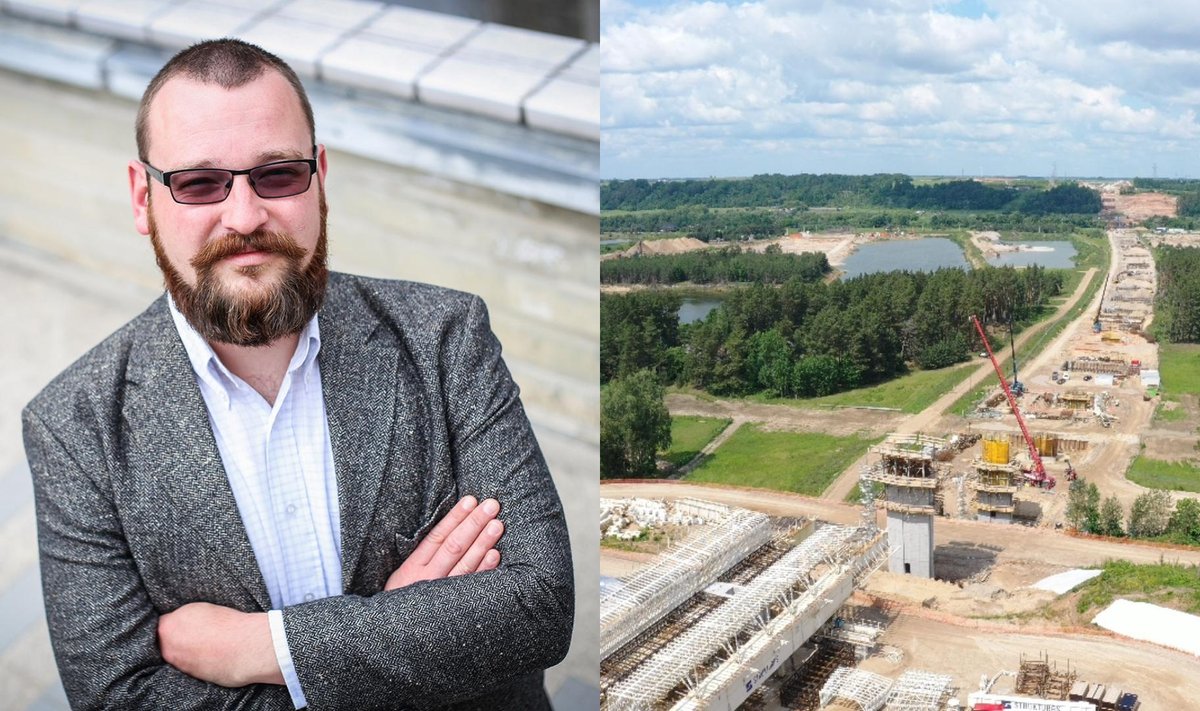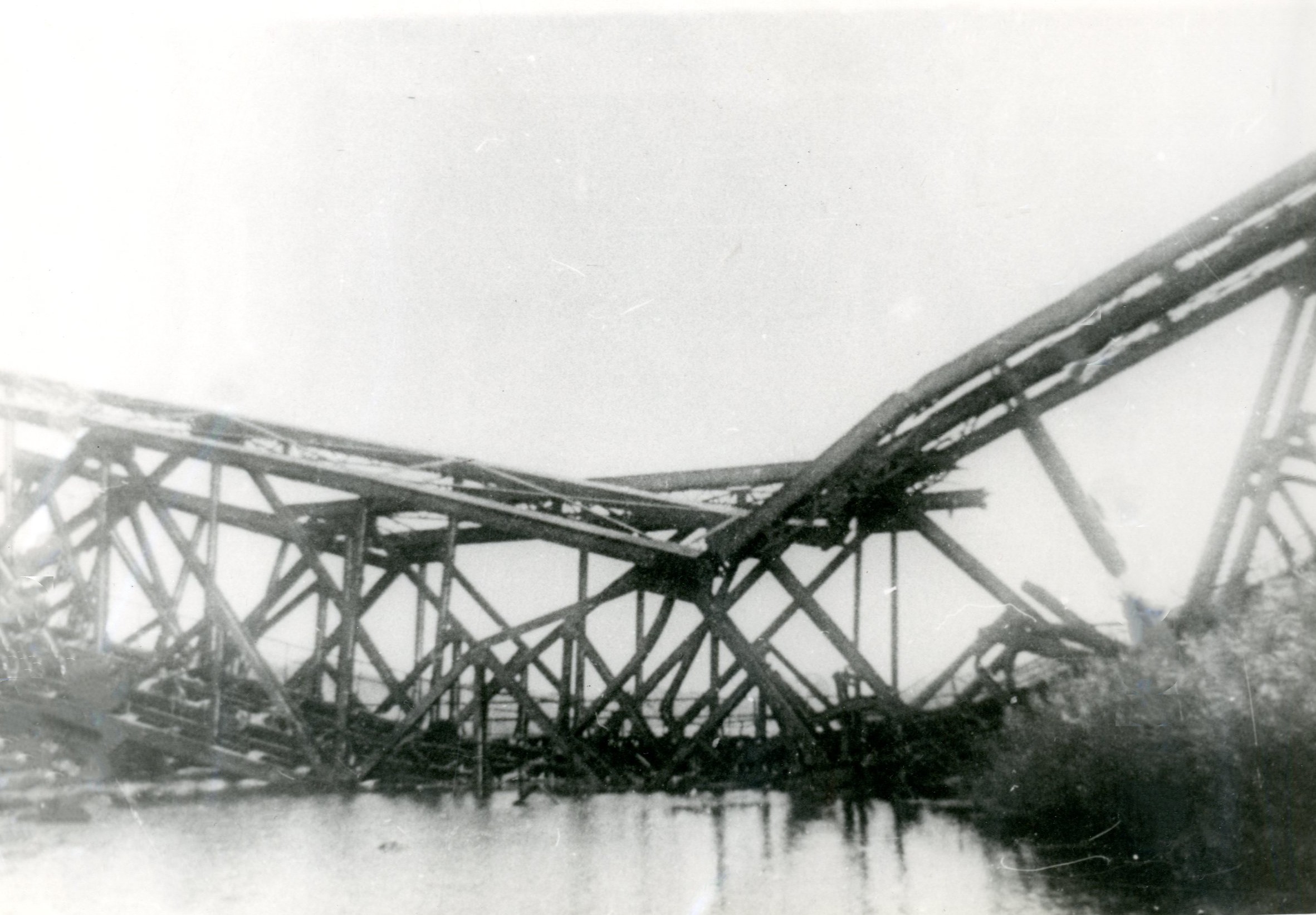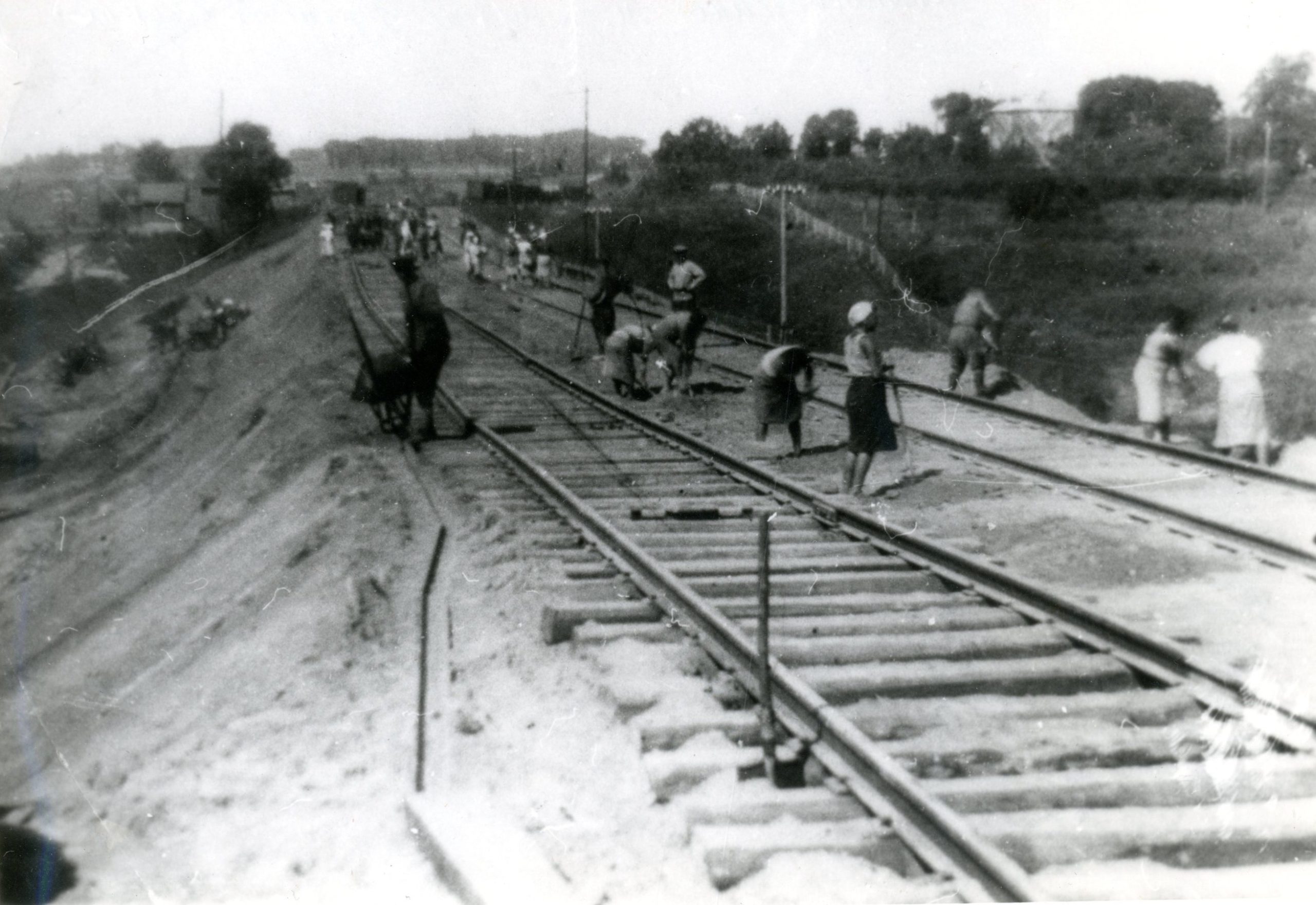
Military historian Karolis Zikars and the Rail Baltica construction site in Lithuania. Photo – from personal archive and LTG group
In Lithuania, we are changing the railway gauge for the 5th time, and every change so far has been driven by war-related reasons. According to military historian Karolis Zikaras, railways today are more important than ever – not only economically, but also in terms of national security.
A railway can determine the outcome of war. Looking at the development of railway infrastructure, the first railways in the world were used to transport freight, and later, passengers. Almost from the very beginning in the 19th century, this infrastructure became the backbone of military logistics.
According to Zikaras, World War I is a reflection of how societal modernization changed the nature of warfare. Unlike in the feudal era, where a king would fight another king, in WWI nations fought nations, and millions of people needed to reach the battlefield as quickly as possible.
In the second half of the 19th and first half of the 20th century, railways played a vital role in transporting armies. How else does one redeploy infantry? One either walks or rides a train. Those who can move massive numbers of soldiers faster than by marching gain the advantage. And the army still needs to be fed, supplied with bullets, artillery, and ammunition. Infrastructure led humanity into modern warfare – conducted by mobile, rapidly redeployable, and high-firepower units. But even the most powerful strike force is useless if it cannot be quickly activated and supplied in time, says Zikaras.
We are only now starting to build the infrastructure we need. Most of Lithuania’s railway system was inherited from Tsarist Russia. In the 19th century, the Russian Empire chose to build a broader railway gauge than Europe’s, with a strategic goal – to prevent the enemy from freely moving along the railway if they invaded Russian territory.
During World War I, the German army occupied all of what is now Lithuania and maintained control until the war’s end. During that time, they converted the railway infrastructure to the European standard gauge. Independent interwar Lithuania also used the 1435 mm wide railway gauge.
After the 1940 Soviet occupation, the system was again reverted to the Russian standard. According to Zikaras, this network was built to serve the needs of the Russian Empire – transporting Ukrainian grain to Latvian ports through Lithuania or enabling Russian elites to travel to Western Europe.

Kaunas railway bridge destroyed in the war. Photo – Lithuanian Railway Museum
Today, 93 percent of Lithuania’s 3,462 km railway network is broad-gauge (Russian), and only 7 percent is European standard. Only now, with the implementation of the Rail Baltica project, are we building railway infrastructure for our own needs – both economic and security.
In Lithuania, the LTG Group also initiated the “FREE Rail” strategic program, aimed at both physical and digital integration of the Baltic countries into Europe’s transport infrastructure map.
A detailed analysis of Russian and Belarusian components revealed that nearly 60 percent of the parts used in Lithuania’s railway infrastructure and rolling stock were produced in those countries, with spare parts also manufactured there. FREE Rail identified alternative suppliers in friendly countries and aims to establish a secure, EU-standard data exchange system.
The railway remains a backbone of war. In Russian military logistics, railways play a key role in mobilization and operations – as shown during the annexation of Crimea and the invasion of Ukraine. Can investments by an unfriendly neighbor on their railway construction or repairs be a sign of war?
According to Zikaras, Russia still heavily depends on railway transport. That’s why we see their offensive logic: first, secure control of railway lines and hubs so reinforcements can be moved and transport guaranteed by rail. We must take this into account and make it as difficult as possible for adversaries to use our railway infrastructure by changing the standard. At the same time, we need to ensure the mobility and supply of our own military by rail. These are two essential strategic directions.
Interestingly, although armored vehicles have high mobility and capability, no tank is designed to drive hundreds of kilometers to its target on its own tracks. While we can fly many resources by air, heavy equipment is still most efficiently transported by rail, which remains a central axis of logistics.
A good time to review our strategy, says Zikaras. Assessing the current state of railway infrastructure, the military historian notes, that Lithuania, long a transit country, finally has the chance to strategically reorganize its inherited system.

Reconstruction of railway tracks after World War II. Photo – Lithuanian Railway Museum
He also points out that railway development has broader effects – it shapes urban development. Some towns and even district centers exist only because rail lines were laid through them.
Now is the perfect time to reassess our railway logic: does the route from Kaunas to Klaipėda really need to go through Šiauliai? Shouldn’t the port city be directly connected to the Rail Baltica line? It is time to stop focusing on Moscow and Minsk and start addressing the needs of our own society, business, and military, suggests Zikaras.
At the moment, a new study on modern Lithuania’s railway infrastructure is underway. Its goal is to define a clear and strategic vision for developing the railway network as the country transitions to the European standard.
This is a historically important step, as the aim is to create an optimal and economically beneficial railway network for Lithuania, with a long-term perspective. The study began after Klaipėda was officially included in the European TEN-T transport network. During the analysis, the best of three proposed routes to Klaipėda will be assessed.
Zikaras reminds us that even in interwar period, efforts were made to adapt the railway network inherited from Tsarist Russia to our needs. However, those were relatively small-scale projects.
Rail Baltica is the first comprehensive, large-scale railway line being built for us and our needs – transportation, defense, strategic, and commercial, says the military historian. Now is a unique opportunity not just to modernize the infrastructure but to fundamentally change the state’s outlook – railways should be seen as the structural arteries of the country, and Rail Baltica is just the first step toward a fully European infrastructure.
This content is the sole responsibility of the author. The European Union is not responsible for any use that may be made of the information contained therein.